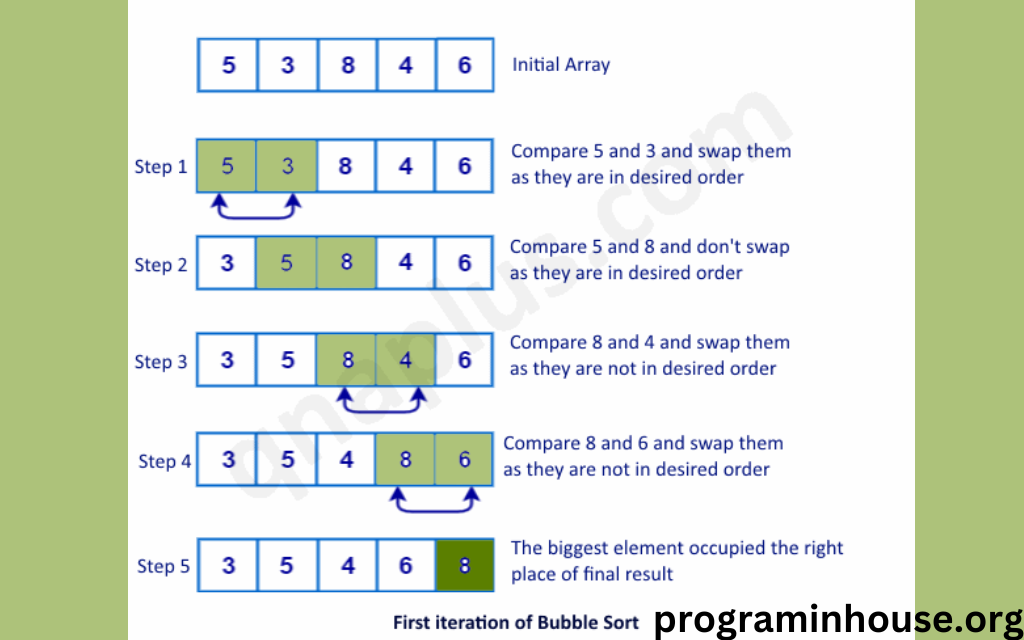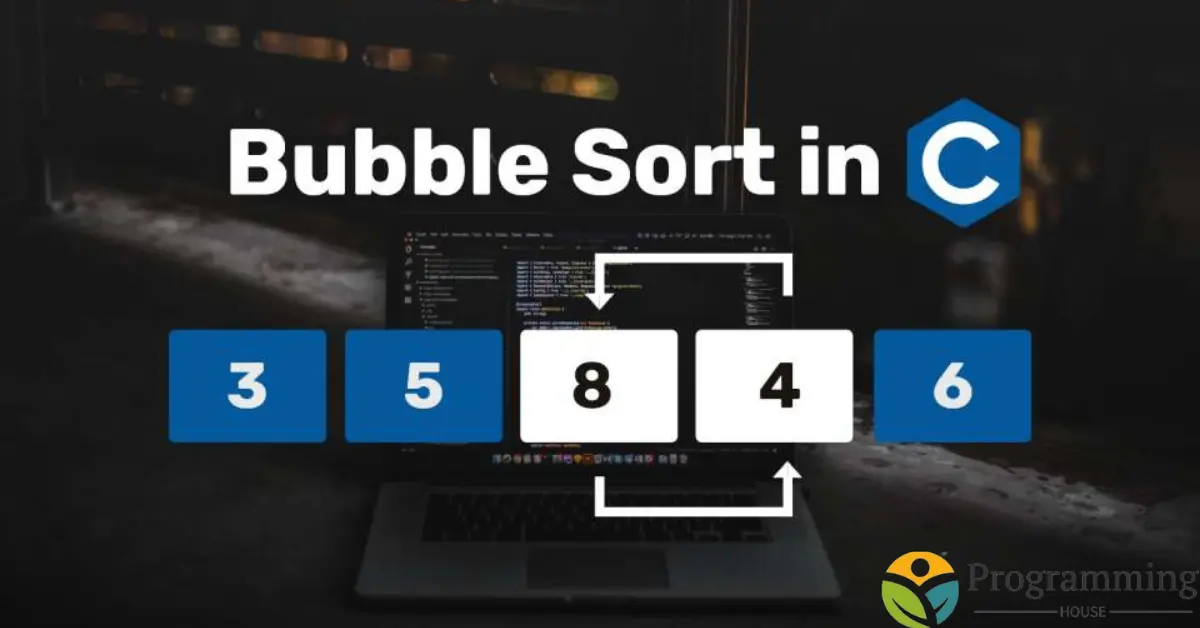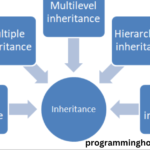Introduction of bubble sort program in c
Bubble sort program in c a process continues until no more swaps are needed, which means the list is sorted. This algorithm is simple to understand and implement but is not suitable for large datasets due to its time complexity. It is best used for small lists or as an educational tool to introduce bubble sorting concepts.

Characteristics of Bubble Sort program in c
- Comparison-based: Bubble Sort compares adjacent elements in the list.
- Stable: It maintains the relative order of elements with equal keys.
- In-Place: Bubble Sort requires only a small, constant amount of additional memory space.
- Time Complexity:
- Worst and Average Case: (O(n^2))
Basic Implementation of Bubble Sort program in C
Here’s the basic implementation of Bubble Sort in C:
#include <stdio.h>
// Function to perform Bubble Sort
void bubbleSort(int arr[], int n) {
int i, j;
for (i = 0; i < n - 1; i++) { // Loop through all elements
for (j = 0; j < n - i - 1; j++) { // Last i elements are already in place
if (arr[j] > arr[j + 1]) { // Compare adjacent elements
int temp = arr[j];
arr[j] = arr[j + 1];
arr[j + 1] = temp;
}
}
}
}
// Function to print the array
void printArray(int arr[], int size) {
int i;
for (i = 0; i < size; i++) {
printf("%d ", arr[i]);
}
printf("\n");
}
int main() {
int n = sizeof(arr) / sizeof(arr[0]); // Calculate the size of the array
printf("Original array: \n");
printArray(arr, n); // Print the original array
bubbleSort(arr, n); // Call the bubbleSort function
printf("Sorted array: \n");
printArray(arr, n); // Print the sorted array
return 0;
}Explanation of the Functions
- Function
bubble Sort: This function takes an arrayarr[]and its sizenas arguments. It uses two nested loops to compare and swap adjacent elements if they are in the wrong order. mainFunction: Initializes an example array, calculates its size, and callsbubble SortandprintArrayfunctions to demonstrate the sorting process.
Optimized Bubble Sort
The basic Bubble Sort algorithm can be optimized by observing that the algorithm doesn’t need to check all elements if no swaps were made in the inner loop, meaning the list is already sorted. Here is the optimized version:
#include <stdio.h>
// Optimized Bubble Sort function
void bubbleSortOptimized(int arr[], int n) {
int i, j;
int swapped;
for (i = 0; i < n - 1; i++) {
swapped = 0; // Reset swap flag at the start of each pass
for (j = 0; j < n - i - 1; j++) {
if (arr[j] > arr[j + 1]) {
// Swap elements
int temp = arr[j];
arr[j] = arr[j + 1];
arr[j + 1] = temp;
swapped = 1; // Set swap flag to indicate a swap occurred
}
}
// If no elements were swapped, the array is sorted
if (swapped == 0) {
break;
}
}
}
// Function to print the array
void printArray(int arr[], int size) {
int i;
for (i = 0; i < size; i++) {
printf("%d ", arr[i]);
}
printf("\n");
}
int main() {
int arr[] = {64, 34, 25, 12, 22, 11, 90};
int n = sizeof(arr) / sizeof(arr[0]);
printf("Original array: \n");
printArray(arr, n);
bubbleSortOptimized(arr, n);
printf("Sorted array: \n");
printArray(arr, n);
return 0;
}Key Modifications in the Optimized Code
- Swapped Flag: A boolean variable
swappedis used to check whether any swaps were made during a pass. If no swaps occur,swappedremains0, and the loop breaks early, reducing the number of passes. - Early Termination: If
swappedis0after any pass, the list is sorted, and we can terminate the algorithm early, improving performance for nearly sorted arrays.
Performance Analysis of Bubble Sort
Bubble Sort’s performance depends on the initial order of elements:
- Worst-Case Scenario: (O(n^2)) occurs when the array is in reverse order. Every element has to be compared with every other element, and a swap is made for each pair.
- Best-Case Scenario: (O(n)) occurs when the array is already sorted. The optimized version detects that no swaps were made and terminates after one pass.
- Average-Case Scenario: (O(n^2)) because, on average, elements are in random order.
Space Complexity
Bubble Sort is an in-place sorting algorithm, meaning it requires only a constant amount (O(1)) of additional memory space for variable storage.
Applications and Use Cases
- Educational Tool: Due to its simplicity, Bubble Sort is often used to introduce the concept of sorting algorithms.
- Small Datasets: Bubble Sort is efficient for sorting small datasets or lists that are already mostly sorted.
- Checking Sortedness: It can be used as a quick check to see if an array is sorted.



